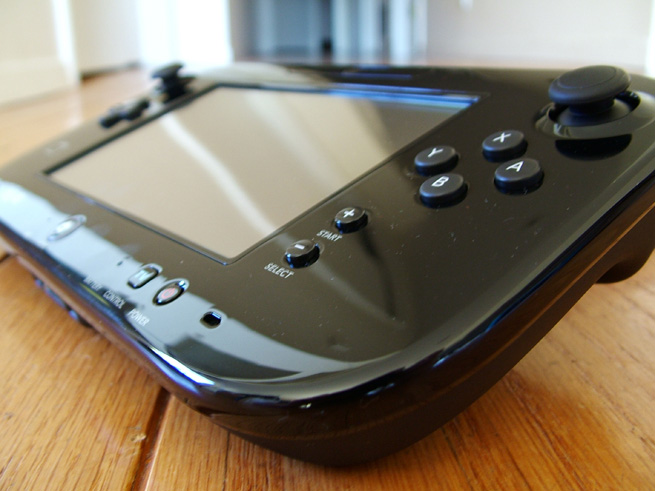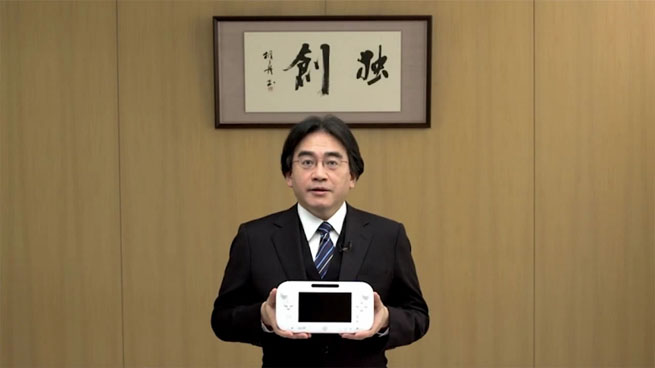Click here for all of GamesBeat’s Wii U launch coverage.
You’ve got to give it to Nintendo: When it locks information down, it’s locked down tight. Its latest console, the Wii U, launches in five days, and we still don’t know the full picture. Hell, Nintendo won’t switch its online features on until tomorrow.
But I’ve had a week to play with the hardware itself, plus a sample platter of first- and third-party titles, and I’ve noticed a few interesting things the Wii U does — and doesn’t do.
The WiiPad has a better range than you think
For months, I’ve listened to Nintendo reps downplaying how far you can travel with the WiiPad. Players chatted excitedly about bathroom-gaming Zelda and Super Mario while on the throne only to have official statements crush their dreams. The pad won’t work through doors. Sorry.
Except it does. I own a two-story house, and my Wii U lives down in the man cave. Just for laughs, I walked away from it while playing New Super Mario Bros. U off the pad’s screen. The fidelity held together at 30 feet, so I headed upstairs … and then closed the door at the top. Still fine. Now, I couldn’t wander too much further, and indeed, putting any more walls between me and the console pretty much killed the signal. But hey, those bathroom breaks show some promise again.
The WiiPad’s touchscreen isn’t always finger-friendly
Touchscreens basically come in two flavors, capacitive and resistant. Capacitive screens, like your iPhones and iPads, register inputs when an electrical conductor (your finger, for instance) disrupts its electrostatic field. The WiiPad follows Nintendo’s tradition of using the more pressure-based resistive touchscreens, which respond better to less squishy, more pointy stimuli (a stylus, for instance).
So no, the WiiPad isn’t always as responsive as perhaps it should be when you swipe it with your finger. It works, but I frequently have to repeat inputs several times to get the desired result. That becomes an issue in several games, too. Fortunately, the pad comes with a built-in stylus — also a Nintendo tradition — that works well.
Screw SD cards
An 8GB model marks a major bump from the Wii’s storage capacity, and nobody should complain at 32GB for the Deluxe model. But if you really need more, the SD card slot does make a return to the new hardware. But screw that … this console’s got four USB ports. You can actually buy an off-the-shelf external hard drive, plug it into the Wii U, and have three terabytes of storage on that bad boy.
Go on. Do it. Just to make Microsoft and Sony cry. Until someone plugs an external drive into their consoles, anyway.
It harmonizes
While I sat typing up notes with the new Wii U menu music playing away in the background, I suddenly noticed the song playing on my television differed slightly from what came out of the pad’s speakers. The two tracks harmonized into one piece, exactly as if they were recorded in stereo (which they probably were) and tuned for a forward/back setup instead of left/right.
I won’t pretend it’s balanced audio, or that the pad’s speakers aren’t a little tinny, or that serious audiophiles will be amused in the slightest. But it’s really a rather neat effect. I can see a savvy developer using that two-channel sound feature to their advantage — say, in Silent Hill-style horror game, where people on the TV tell you one thing and voices on your WiiPad tell you something very different.
It’s the best universal remote ever
I’ve tried a number of universal remotes over the years, and not a single one could sync to my Sharp HDTV (in fairness, it’s so old that I could get three bigger LCDs today for the same price I paid for it way back when). The WiiPad did it in 10 seconds. All I had to do was press the “TV” button on its face, identify the manufacturer, and we were in business.
That said, while we’re told you can use the WiiPad as a remote without leaving the Wii U on full-time, I couldn’t get it to work. Pressing the “TV” button on the pad supposedly does the trick, but it’s not happening here. We’ve reached out to Nintendo for clarification.
Update: After checking and re-checking everything, it looks like the problem was with my older-than-dirt TV. A few solid kicks solved everything, and the feature works as advertised now.
But that’s not all. Oh, no, that is not all.



